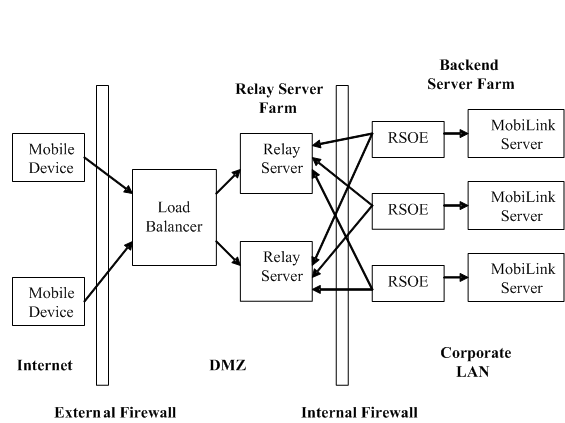A Relay Server deployment for MobiLink consists of the following:
The following diagram shows the relay server architecture.

The relay server is implemented as a set of web extensions and therefore requires a web server to run. Two webs servers are
supported: IIS on Windows and Apache on Linux. For information about which versions are supported, see ![[external link]](gif/external.gif) SQL Anywhere Supported Platforms and Engineering Support Status.
SQL Anywhere Supported Platforms and Engineering Support Status.
Because the relay server is a web extension running in a web server, all communication is performed using HTTP or HTTPS. Using HTTP easily integrates with existing corporate firewall configurations and policies. The relay server requires that the connection from the corporate LAN to the relay server be initiated from inside the corporate LAN. This provides a more secure deployment environment because it does not require inbound connections from the DMZ into the corporate LAN.
The Relay Server contains two web extensions: a client extension and a server extension. The client extension handles client requests made from applications running on mobile devices. The server extension handles requests made by the RSOE on behalf of a backend server.
The relay server farm
MobiLink server farm
Load balancer
Relay server RSOE
| Send feedback about this page via email or DocCommentXchange | Copyright © 2008, iAnywhere Solutions, Inc. - SQL Anywhere 11.0.0 |